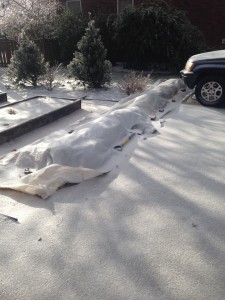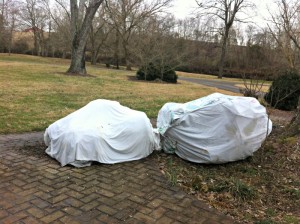Two polar vortex systems have passed into middle Tennessee in January 2014. So what?
There will be dead plants apparent in a couple weeks? Why?
They weren’t cold hardy, meaning they weren’t adapted to the cold climate in first place. Or…
They were planted incorrectly. Or…
They were dry. Why should this matter?
Dry roots mean that the stems are more likely to dessicate or dry out from the frigid winds.
The next time it’s going to be below 32 degrees, make sure your plants in containers or freshly planted trees and shrubs are soaked.
The ice crystals that form from free water in the soil actually insulate the roots. So says scientists…
Enjoy the warm winter days! Trees and daffodils will be blooming soon…






